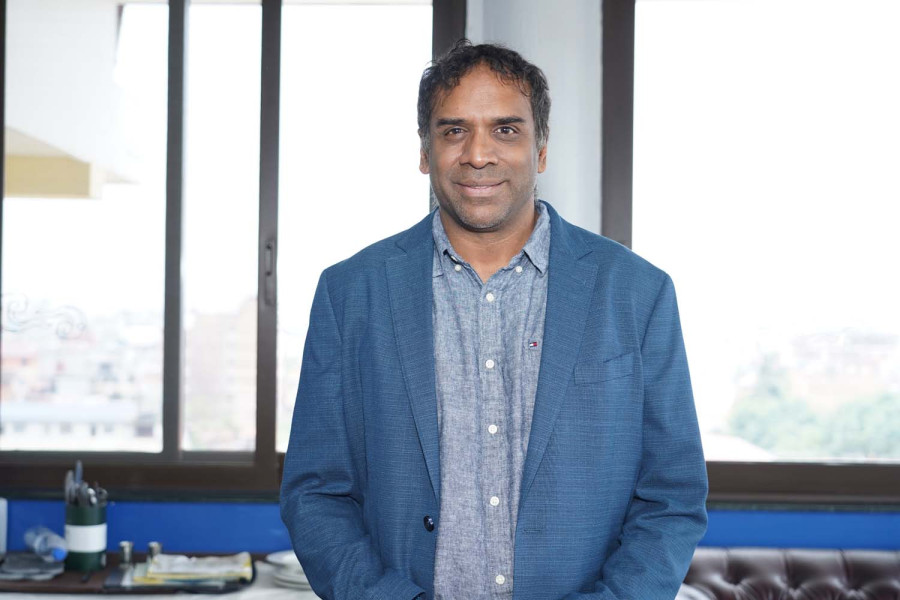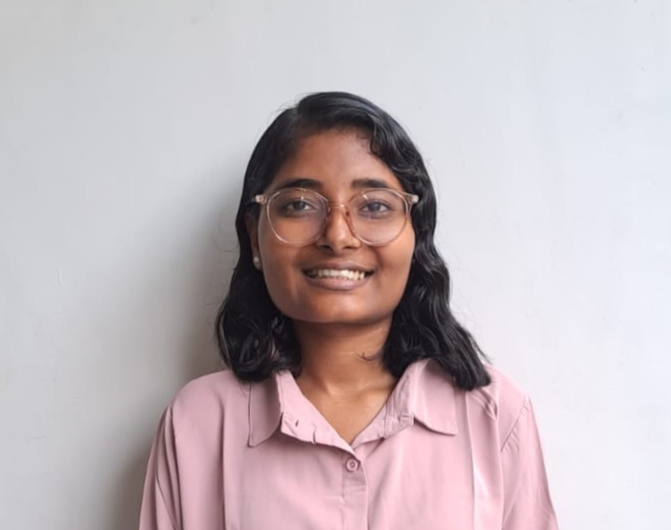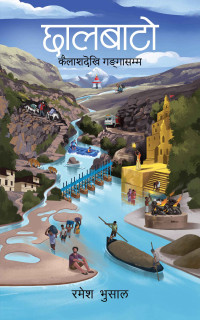Books
Translated works allow you to relate to other parts of the world
Author Ravi Shankar shares his love for books growing up, poetry, and the importance of translation.
Aarati Ray
Pushcart Prize (an American literary prize published by Pushcart Press) winning poet, translator, author and professor Ravi Shankar has published, authored and edited over 15 books, including the Muse India award-winning translations of 9th-century Tamil poet/saint Andal.
He has won awards from the Corporation of Yaddo and the MacDowell Colony. Most recently, his collaborative chapbook, ‘A Field Guide to Southern China’, written with TS Eliot Prize winner George Szirtes, was published in the UK by Eyewear Publishing.
Currently, he is in Nepal as part of the Himalayan Literature Festival and New York Writers Workshop (NYWW), which will end on June 2.
In an interview with the Post’s Aarati Ray, Shankar shares his love for books growing up, poetry, and the importance of translation.
How connected were you with reading growing up?
From a young age, I was an avid reader, starting around the age of three. I would stay up late, using a hidden flashlight to continue reading past my bedtime, losing myself in imaginary worlds. Growing up as an Indian in America, I faced some racism and other challenges, but books provided a sanctuary of pure ideas. Reading and writing have always been my passions.
I loved books with elements of fantasy, mystery, and science fiction. Through reading, I connected with Nepali and Indian culture. I especially enjoyed Amit Chitra Katha's comic books, which introduced me to the Ramayana, Hanuman, and other cultural figures.
Nowadays, I read a variety of interdisciplinary works, from autofiction and non-fiction to speculative fiction and poetry, which remains my favourite. For me, reading is a gateway to all kinds of knowledge and enjoyment.
Given your heritage and upbringing, you are connected to Indian and English poetry. Have you ever explored Nepali poetry as well?
In 2008, I co-edited and published ‘Language for a New Century: Contemporary Poetry from the Middle East, Asia, and Beyond’, which features 450 poets from 61 countries, including Nepal. This project was my introduction to Nepali poetry, where I discovered poets like Banira Giri and Manjushree Thapa. I’ve also connected with the young Nepali poet Rohan Chhetri in America. The Himalayan Literature Festival has further introduced me to many new Nepali voices and enriched my understanding of their literature.
How do you think the rise of digital media has affected poetry and its consumption pattern?
I've seen many changes, but I believe digital media has many positive aspects. In 2014, during my visit to Nepal, I discussed ‘The Drunken Boat’, an electronic arts journal I founded in 1999. This magazine features poetry, prose, photography, video, sound arts, and local media.
Digital media has made poetry more accessible. If you put poetry on Instagram, you can reach a large global audience, whereas if you publish a book, you don't know who will read it. Online, the potential audience is much larger.
Additionally, digital media allows poetry to intersect with other art forms in exciting ways. For instance, ‘The Drunken Boat’ often includes audio or video recitations of poems, enabling readers to both read and listen simultaneously.
What do you think is the most important element while composing poems?
Keen attention to the self and language is crucial in poetry. While anything can inspire a poem, the best poetry is compact and precise, counting every word. Unlike prose, there's little room for digression.
Attention to language, the world, and sensory details is vital. The best poems are often concrete rather than abstract, conveying a strong sense of identity and place.
You are an author, editor and translator? Which is your favourite line of work?
I love them all for different reasons. I am intuitively a poet and have translated works from my mother tongue, Tamil, including Andal’s 8th-century bhakti poetry. Each practice offers something unique, so it’s difficult to choose.
I helped edit and publish this book, The Three Indian Poets. Editing helps you connect and collaborate with other people. The translation is very important as it allows you to humanise another part of the world and access information you might not have otherwise.
For me, poetry is the most ancient and important art form. If we look at history, even before the advent of written language, people had poems because it was easy to pass on family history. Today, poetry is a perfect fusion of music, ideas, and emotion. So, I think poetry has to be at the top, even though I don't want to pick sides.
How difficult is it to maintain originality and emotions while translating?
It can be difficult. For instance, translating Andal was particularly challenging because it was not just in Tamil but in old Tamil. Previous translations were scholarly, heavily footnoted and letter-based, missing the essence. My focus was on capturing and conveying that essence.
While working, I strived to make Andal’s 8th-century poetry contemporary, updating references and metaphors while staying true to its essence, as many original references might be unfamiliar to modern readers.
Although difficult, translations are crucial today for developing cultural empathy. They help us realise our shared humanity, desires, hopes, and dreams.
What do you find most rewarding about teaching young aspiring writers from different countries in workshops like NYWW?
Teaching is how I make my living, but the part I love most is the genuine exchange of ideas when someone discovers something new. Even as a teacher, I am always learning.
Workshops like NYWW are great because participants from around the world bring their own cultures and experiences into our conversations. In a time obsessed with commercialism and materiality, reading, writing, and poetry offer a moment of escape. The most rewarding part for me is seeing students' excitement about their learning and sharing.
How do you envision the development of poetry and literature in the next decade?
People often claim that poetry is in decline, but this sentiment has echoed through the centuries, and poetry continues to thrive. Currently, we are witnessing the early phases of digital culture and the internet reshaping our reading habits. Over the next decade, digital reading and audiobooks will likely become more popular, while physical books may evolve into artistic objects, cherished and displayed like paintings.
We must foster a habit of reading from an early age to ensure young people continue to love reading as we transition to digital formats. Events like the Himalayan Literature Festival are crucial, where people can connect with authors worldwide and realise that literature is not dying; it's alive and vibrant.
Book recommendations
From Unincorporated Territory [åmot]
Author: Craig Santos Perez
Publisher: Omnidawn
Year: 2023`
This collection of poems stretches the bounds of syntax and visuality, reconfiguring the spectre of colonialism and the culture of the native Chamoru people in Guam in the western Pacific.
The Life and the Adventures of a Haunted Convict
Author: Austin Reed
Publisher: Random House
Year: 2016
This is the earliest known prison memoir by an African American writer written in the mid-19th century. It portrays the connection between race, slavery, and incarceration that persists in contemporary America today.
Julia
Author: Sandra Newman
Publisher: Mariner Books
Year: 2023
Newman’s book is an inventive, feminist retelling of George Orwell's classic ‘1984’ told from the perspective of Julia and deepening some of Orwell's dystopian themes about modern society.
Eating God
Editor: Arundhathi Subramaniam
Publisher: Penguin Ananda
Year: 2014
This amazing anthology of bhakti poetry traces the development of mystic poetry across India and the South Asian subcontinent from the 8th century onwards. It shows regional complexity and a rich range of voices in translation.
City of Thieves
Author: David Benioff
Publisher: Viking/ Penguin
Year: 2008
By the co-creator of Game of Thrones, this hilarious, terrifying and moving novel describes the Nazi siege of Leningrad through the story of male friendship. The humour and tale of struggle capture the human psyche well.




 16.12°C Kathmandu
16.12°C Kathmandu










